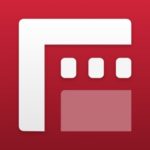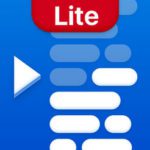In this digital age, it’s smart phones that rule the world; but are you using yours to its full potential? According to our recent Shout! Communications Small Talk speaker, Marc Settle, if you’re only using your phone for calls and texts, then you might as well have an old-school Nokia from the early 2000s! Marc is the BBC’s trainer in mobile journalism and his insights were nothing short of extraordinary. Not only is mobile technology changing the way broadcast journalists work, it will change the way we view and interact with it as an audience too.
Marc’s background is in regional television and radio, but now he teaches journalists at the BBC how to use their mobile devices to their full potential. His work is predominantly with iPhones, but interestingly he told us it’s still Android phones that are king in the UK: around 65% of mobile phone users have an Android, against 35% who use an iPhone. This is particularly the case outside of the London bubble.
Perhaps an obvious fact, but the reason smart phones are going to change the future of broadcast can be put simply in one work: accessibility. A smart phone can get to more places much quicker than a full set of camera equipment will ever be able to. A small phone, even with a tripod and microphone, also looks less daunting in difficult situations, and can put interviewees more at ease than pushing an intimidating camera in front of their face. Given we’re all pretty much glued to our phones as it is, and would be more likely to have it to hand if something unexpected was to happen, it means a journalist can start reporting immediately on location when news breaks. This is why you’ll have seen several BBC journalists reporting live from major news events when they just happen to be holidaying in that particular area.
But how exactly are journalists using their smart phones to produce broadcast-worthy footage? Well, firstly the BBC has its own top-secret mobile app which staff use for filming and editing video footage for news packages, in a quality that is appropriate for broadcast. Using the technology of this app, BBC journalists then kit out their phones to be nearly as good quality as professional cameras. This means connecting the phone to a better-quality microphone, putting it on a tripod and providing professional lighting. Of course, it will never be as good as a camera that costs thousands of pounds with an experienced camera-person, but when Marc showed us a few clips and asked which were shot with cameras, and which were created using iPhones, only around a third of the room could guess the difference.
“Smart phones are the swiss army knives of the 21st Century”
In order to get the most out of your smart phone, Marc advises paying for apps. And no, he’s not paid to say that, he just knows first-hand how such apps can open your eyes to new possibilities. I must say, he was very convincing and had several of our guests ready to invest! A few noteworthy apps you might be interested in downloading if you’re in the broadcast world:
FiLMiC Pro – The so-called “most advanced cinematic video camera app for mobile” is great for filming footage you can later edit, according to Marc.

Splice – This app makes it easy to edit professional-looking videos on your smart device and has a 4.8 review rating in the app store

Teleprompter Lite – a must for any broadcast journalist doing a piece to camera from their smart phone. This app allows you to be prompted at any speed, and also automatically adds in subtitles for your video if you need them.

Top Tips
Finally, a few top tips from the mobile guru himself, Marc Settle:
- If you’re planning on using your phone to broadcast live, or pre-rec and edit, the key elements you will need are storage, battery and wifi!
- Put your phone on Airplane mode or Do Not Disturb when using the phone to film.
- Don’t use WhatsApp to send videos – it loses a lot of the video data and while it may look alright on a phone, if it is put out on the big screen it will be very poor quality.
- Get creative – you can make a more creative video package by utilising features such as time lapse.
- Where do you want your interviewee to look? If you want to shoot your package in a news style, make sure you still follow the basic golden rules when using your phone. Side on (as if they are looking at the interviewer, who is standing to the side of the camera) is more conventional. But for a more intimate or emotional story it can work well if the interviewee speaks directly into the camera.
- If you’re filming for news, don’t forget to turn your phone to landscape! This avoids those annoying blurry blocks having to be used at the side of a video when it’s broadcast.
Obviously, there’s still an argument for using traditional camera crews – especially for PR generated content, such as B-roll for television and online video packages to be placed editorially on websites. For more information have a look at What We Do: https://shoutcommunications.co.uk/what-we-do/. Or call one of our team on 020 7240 7373.



